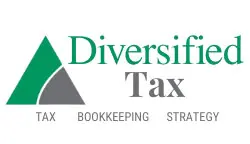When should you adjust your W-4 withholdings?
When should you adjust your W-4 withholdings?
Navigating the intricacies of tax withholdings can be a daunting task for many individuals, but it’s a crucial aspect of personal finance that shouldn’t be overlooked. One of the key decisions you’ll need to make is determining when to adjust your W-4 withholdings. This article will delve into the factors to consider, the benefits of making timely adjustments, and the potential consequences of failing to do so.
Understanding W-4 Withholdings
The W-4 form, officially known as the “Employee’s Withholding Certificate,” is a crucial document that informs your employer how much federal income tax to withhold from your paycheck. Completing this form accurately is essential for helping to ensure the appropriate amount of taxes are withheld, preventing over or under-withholding, and avoiding potential penalties or surprises come tax season.
Life Changes that Warrant a W-4 Adjustment
There are several life events and changes that may trigger the need to adjust your W-4 withholdings. These include:
- Marital Status Changes: Getting married, divorced, or separated can significantly impact your filing status and the number of allowances you’re entitled to claim.
- Number of Dependents: The birth or adoption of a child, or a change in the number of dependents you claim, can affect your withholding requirements.
- Income Changes: A new job, a raise, or a change in your spouse’s income can necessitate a W-4 adjustment to help ensure the correct amount of taxes are being withheld.
- Tax Deductions and Credits: If you’ve experienced changes in your eligibility for deductions or credits, such as the mortgage interest deduction or the child tax credit, you may need to update your W-4.
- Retirement or Side Income: Transitioning into retirement or taking on a side job can also require a review and potential adjustment of your W-4 withholdings.
The Benefits of Timely W-4 Adjustments
Keeping your W-4 up-to-date is essential for several reasons:
- Avoiding Underpayment Penalties: If you fail to withhold enough taxes throughout the year, you may face underpayment penalties when filing your tax return.
- Maximizing Cash Flow: Accurately adjusting your withholdings can help you maintain a steady cash flow and avoid the common issue of over-withholding, which results in a large tax refund that could have been better utilized throughout the year.
- Improving Tax Planning: Timely W-4 adjustments allow you to better plan and prepare for your annual tax obligations, helping ensure you’re not caught off guard by a significant tax bill or unexpected refund.
- Reducing Stress and Surprises: By keeping your W-4 current, you can minimize the stress and surprises often associated with tax season, providing you with a more streamlined and organized financial planning process.
When to Review and Adjust Your W-4
Experts recommend reviewing and potentially adjusting your W-4 withholdings in the following scenarios:
- Life Events: Anytime you experience a significant life change, such as getting married, having a child, or changing jobs, it’s prudent to review your W-4 and make necessary adjustments.
- Annually: Even if your personal circumstances haven’t changed, it’s a good practice to review your W-4 at the start of each new year to help ensure your withholdings are still aligned with your current tax situation.
- Major Tax Law Changes: When there are significant changes to the tax code, it’s essential to review your W-4 to help ensure your withholdings are keeping pace with the new regulations.
- Significant Income Fluctuations: If your income has changed significantly, either due to a raise, job change, or other factors, it’s crucial to update your W-4 to avoid over or under-withholding.
Calculating the Ideal W-4 Withholdings
Determining the optimal W-4 withholdings can be a complex process, as it involves considering your filing status, number of dependents, anticipated deductions and credits, and other personal financial factors. Here are some strategies to help you calculate the ideal withholdings:
- Use the IRS Withholding Estimator: The IRS offers a free online tool, the Withholding Estimator, which can help you determine the appropriate number of allowances to claim on your W-4.
- Consult a Tax Professional: For a more personalized approach, consider working with a tax professional, such as a certified public accountant (CPA) or enrolled agent, who can review your specific financial situation and provide tailored recommendations for your W-4 withholdings.
- Review Your Previous Tax Returns: Examining your past tax returns can provide valuable insights into your typical tax liability and the appropriate withholding levels for your situation.
The W-4 form may seem daunting, but understanding its key sections can make the process of adjusting your withholdings much more straightforward:
- Personal Information: This section requires you to provide your name, address, and social security number.
- Filing Status: Here, you’ll indicate your filing status, such as single, married filing jointly, or head of household.
- Multiple Jobs or Spouse Works: If you or your spouse have multiple jobs or sources of income, this section helps you account for that.
- Dependents and Other Adjustments: This section allows you to claim deductions, credits, and other adjustments that may impact your tax liability.
- Extra Withholding: If you’d like to have additional taxes withheld from your paycheck, this section is where you can specify the amount.
Potential Consequences of Inaccurate W-4 Withholdings
Failing to keep your W-4 up-to-date can have several consequences, including:
- Underpayment Penalties: If you don’t have enough taxes withheld throughout the year, you may face underpayment penalties when filing your tax return.
- Unexpected Tax Bills: Underestimating your tax liability can lead to a significant tax bill that you may not be prepared to pay.
- Reduced Cash Flow: Over-withholding can result in larger-than-necessary tax refunds, which means you’re essentially providing the government with an interest-free loan throughout the year.
- Stress and Frustration: Dealing with tax-related surprises and penalties can add unnecessary stress and frustration to your financial planning process.
Staying Informed and Proactive
Keeping up with the ever-changing tax landscape and ensuring your W-4 withholdings are accurate is an ongoing process. To stay informed and proactive, consider the following:
- Monitor Tax Law Changes: Stay up-to-date on any changes to the tax code that may impact your withholding requirements.
- Utilize Online Resources: Take advantage of the IRS Withholding Estimator and other online tools to help you navigate the W-4 adjustment process.
- Consult Tax Professionals: Regularly consult with a tax professional to ensure your W-4 withholdings are optimized for your specific financial situation.
- Set Reminders: Create calendar reminders to review your W-4 withholdings at key points throughout the year, such as the start of a new year or after a significant life event.
By staying proactive and making timely adjustments to your W-4 withholdings, you can enjoy the benefits of improved cash flow, reduced tax-related stress, and a more streamlined financial planning process.
Conclusion
Adjusting your W-4 withholdings is a crucial aspect of personal finance that can have a significant impact on your tax obligations and overall financial well-being. By understanding the factors that warrant a W-4 adjustment, the benefits of timely updates, and the potential consequences of inaccurate withholdings, you can take control of your tax situation and help ensure a smoother, more stress-free financial journey. Remember, staying informed, utilizing available resources, and consulting with tax professionals can all help you navigate the W-4 adjustment process with confidence. By taking the time to review and update your withholdings as needed, you’ll be well on your way to achieving your financial goals and maintaining a healthy, balanced tax strategy.




